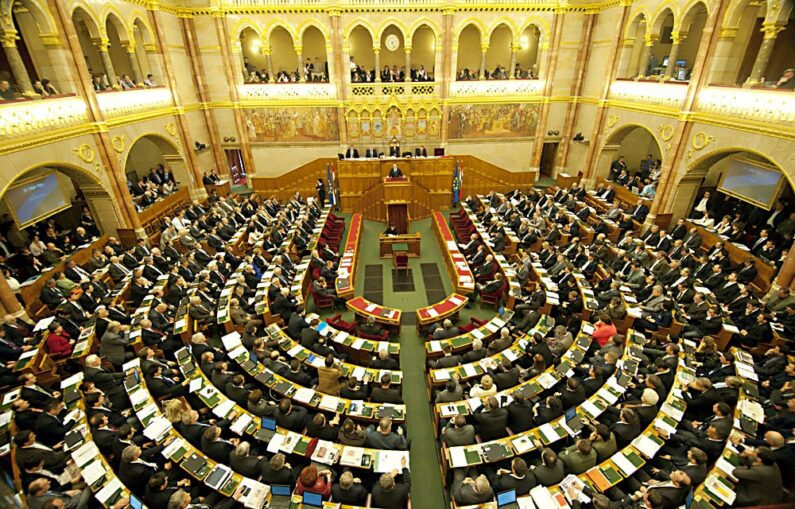According to a survey, there are 29 districts where the difference between the candidates of the two political blocs is less than five percentage points, and the results here will decisively determine who will be able to form a government in the spring.
Now that we already know the exact date of the parliamentary election (April 3), party leaders, analysts and those interested in the field are perhaps paying even more attention to the public opinion poll data, based on which it can be estimated that the rivals - primarily the two big ones, Fidesz-KDNP and the left-wing opposition - how are they currently doing, what result would be achieved "this Sunday". The other day, on the site taktakiiszavazas.hu, which promotes the change of government, a complex forecast was published, which gives a prognosis of how many seats, based on the current data, which side can expect to win, and in which constituency Fidesz or the joint opposition candidate is leading. And although the list results are also very important, it is actually decided in the individual constituencies (e.v.) who wins the election.
The capital belongs to the opposition, the majority to Fidesz
The analysis calculates that only the two political blocs will gain mandates, that is, enter the parliament, and the governing parties will easily defeat the opposition by a ratio of 107:91, and the fate of one mandate is questionable. According to the document, Fidesz-KDNP would win 60 of the 106 individual constituencies, 47 on the national list, and the joint opposition 46 and 45, respectively.
This would certainly mean a parliamentary majority for the forces currently in power, but far from two-thirds, as in 2018 the governing parties had 91 individual and 42 list seats in the parliament.
This positive scenario for the Fidesz-KDNP is especially favorable in view of the fact that the analysis does not count on a single victory for the ruling party in Budapest, for example, and even calculates that there will be a difference of over 10 percentage points in favor of the left in the capital in all 18 individual constituencies. According to the news, the campaign experts of the ruling party really do not have high hopes for the results in the capital, but in several individual constituencies here (including the 3rd, 13th, 14th, i.e. the XIIth, XVIth, XVIIth districts) they consider it realistic .
In 2018, in addition to these, they also won in three other places (in the II., VIII. and XI. districts). According to the forecast, opposition success can be expected in the majority of districts in Pest County, especially in areas closer to the capital. In addition, in the 2-2 constituencies of Pécs and Miskolc, as well as in a part of Szeged, in Nyíregyháza, Dunaújváros, and Szolnok, a more dominant left-wing victory of over 10 percentage points is expected. In the other constituencies of Szeged, Orosháza, Tatabánya and Budakeszin, the opposition's advantage is between 5-10 percentage points, i.e. relatively convincing.
Twenty-nine battlefield districts
However, in forty-four constituencies, Fidesz can count on a huge victory of over 10 percentage points, or a significant victory of between 5 and 10 percentage points, the former in 29 and the latter in 15 places. Especially in the counties of Bács-Kiskun, Tolna, Zala, Vas, and Győr-Moson-Sopron, as well as in the north-eastern regions of the country, the governing parties do not have to worry, but there are also several such individual constituencies in the Danube-Tisza region and Tiszántúl.
The outcome of the elections will most likely be decided by the so-called battleground districts, where a very fierce fight is expected. The tactical voting page named 29 constituencies where the difference is less than 5 percentage points in favor of one of the candidates, 16 of them tilt in favor of the government and 13 in the direction of the opposition.
Let's look at the more interesting ones!
Perhaps one of the most piquant fights will take place in Hódmezővásárhely, since Péter Márki-Zay is not only the joint prime ministerial candidate of the left, but also wants to obtain an individual mandate in an unusual way. His opponent, the former strong man of Fidesz, János Lázár, who four years ago received almost 52 percent of the votes, has thus "erased" his opponents.
The situation will obviously be different now, but according to the analysis, he leads by almost five percentage points (49.02 : 44.26), despite the fact that the mayor of Hódmezővásárhely is also running, and his candidacy for prime minister gives him a huge media advantage. Of course, this may be why Lázár is doing well, since Márki-Zay is making mistake after mistake in his campaign . The left-wing politician may win in the center of the electoral district, but Lázár may prevail in the other settlements.
The Fidesz candidate also leads in Szombathely, but by only 0.02 percentage points, which practically means a total tie between Csaba Hende and Csaba Czeglédy from DK. In 2018, the politician from the governing party achieved 49.92 percent, while the second András Nemény (MSZP-Párbeszéd) only got 30.52, but then the opposition parties ran separately. And it may be a warning sign for Hende that Nemény was elected mayor in the seat of Vas County a year and a half later.
For this reason, there was a big battle for the district in the primary election: Czeglédy, who was involved in scandalous cases and is currently accused, but who is popular locally despite all this, could barely beat the LMP's capital savior, Péter Ungár. A fierce fight to the extreme is expected on April 3 as well.
A big battle can also be expected in electoral district No. 6 of Borsod-Abaúj-Zemplén County. In and around Tiszaújváros, the parties have already been fighting for a year and a half, since interim parliamentary elections had to be held due to the death of Ferenc Koncz, the father-in-law of Fidesz. Then his daughter, Zsófia Koncz, defeated László Bíró, who was famous for his Jewishness, with a ratio of 50.51 to 46.27.
the full Mandiner article here.
Image: Parlament.hu












